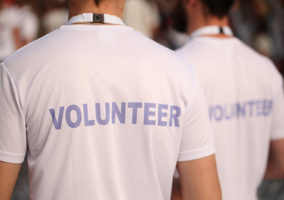Ethnic minority groups are more likely to say they intend to volunteer in 2024 than white groups, according to a new report.
This week, the National Lottery Community Fund (NLCF) released the full report of its community research index that surveyed over 8,000 respondents across the UK.
Some 73% of people belonging to ethnic minority groups said they intended to volunteer in 2024, compared to 45% of white respondents and 58% of white minority respondents.
Only 17% of ethnic minority respondents said they did not intend to volunteer compared to 30% of white minority respondents and 42% of white respondents.
The sample of white respondents was 7,653 compared to 1,323 people from non-white ethnic minority backgrounds.
Lesbian, gay and bisexual respondents more likely to volunteer
The report found 55% of lesbian, gay and bisexual (LGB) respondents said they intend to volunteer, compared with 49% of heterosexual respondents.
There was a sample size of 8,064 heterosexual respondents compared to 745 LGB respondents.
Some 15% of LGB respondents said they did not know whether they intended to volunteer during the year compared to 11% of heterosexual respondents.
Meanwhile, 65% of respondents aged 16-34 said they intended to volunteer during the year compared to 38% of people over the age of 65.
The research also found 48% of respondents aged 35 to 54 said they intended to volunteer compared to 40% of 55 to 64-year-old respondents.
In terms of disability, there were 1,799 participants that reported having a mental health condition and 1,444 that reported having a physical condition. The remaining 5,832 said they had no disability.
In the survey, 53% of respondents with a mental health condition said they intended to volunteer during the year compared to 46% of those with a physical disability.
Almost half (49%) of respondents with no disability said they intended to volunteer.
Lowest socio-economic grade less likely to volunteer
The survey also examined the question by respondents' socioeconomic grade.
According to the results, the lower someone’s socio-economic grade, the less likely they were to say they intended to take part in volunteering in 2024.
NLCF’s research classified socio-economic grades by occupations A-E, with A representing higher managerial, administrative professionals and B representing intermediate managerial or administrative professionals.
C represented a combination of skilled manual workers and supervisory, clerical or junior managerial occupations.
Respondents that fell into socio-economic grade D are classed as semi-skilled or unskilled workers while the lowest socio-economic grade, E, represents state pensioners, casual or lowest grade workers or those that are unemployed on state benefits.
Some 58% of the highest socioeconomic grades, A and B, said they intended to volunteer, compared to 38% of the lowest socio-economic grade.
Gender and volunteer intention
Half of the male respondents to the survey said they intended to take part in volunteering activities in 2024 either formally or informally, compared to 49% of female participants.
While 39% of men said they would not, 11% said they did not know. Some 36% of women said they did not intend to volunteer and 15% said they did not know.
There were more women in the sample than men – with 4,913 female respondents and 4,015 male respondents.










